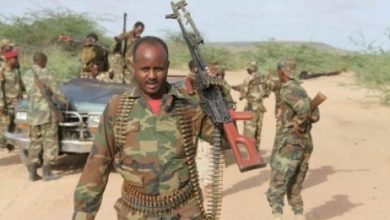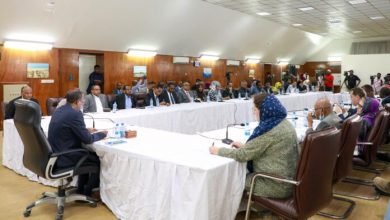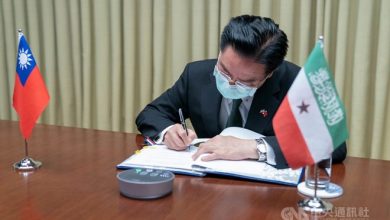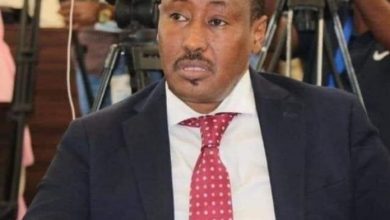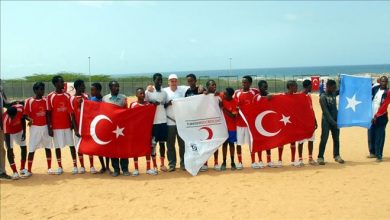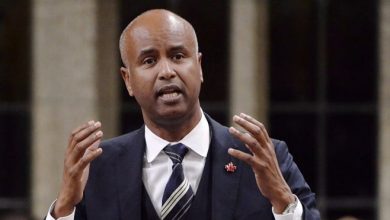Culture of impunity in Somalia continues to grow
Somalia remains one of the most dangerous places for journalists across the globe. For the fifth year in a row, the country has maintained the ignominious world title for impunity towards killed journalists. The Somali authorities rarely investigate cases of killings or attacks on journalists, media outlets and critics.
Somalia remains one of the most dangerous places for journalists across the globe. For the fifth year in a row, the country has maintained the ignominious world title for impunity towards killed journalists. The Somali authorities rarely investigate cases of killings or attacks on journalists, media outlets and critics.
At least eight journalists have been killed in south central Somalia and Puntland in the past three years. Four of the journalists (including a cameraman who was shot dead by a policeman) were killed in 2018, two in 2019 and two others in 2020.
Another journalist survived – albeit with serious injuries – an attempt on his life after a bomb attached to his car was remotely detonated in December 2018.
No one has been arrested for the killings or the attempted murder of these journalists.
To an unprecedented level, assaults and targeted incidents of attacks on journalists have risen. More than 30 such assaults were recorded in 2018 with the majority of them particularly targeting journalists who were covering stories at national events, at blast sites covering the aftermath of Al-Shabaab attacks, during demonstrations against government policies and while going through security checkpoints in Mogadishu.
Apart from these, the authorities in Mogadishu, those in Puntland as well as in Somaliland, have raided and temporarily closed media outlets to prevent or discourage coverage of news events, to extort money from media owners or as retaliation against the media outlet for being critical.
The year 2019 also ended as multiple actors continued to target journalists and media professionals in Somalia. While the number of journalists killed in Somalia was considerably less than in previous years, the level of arbitrary arrests, attacks and suspensions remained high in 2019 across Somalia.
According to data compiled by the Somali Journalists Syndicate (SJS), 53 cases of arbitrary arrests were recorded. There were also 81 incidents of physical assaults. Three of these journalists were severely wounded, two of them after being shot.
There were also death threats against journalists, and obstruction of access to information during the year.
Seven media houses were also shut across the country during 2019. Police in Puntland were extremely aggressive to the media and carried out four raids on independent media houses for investigative news reports deemed critical of the state.
The politically sensitive elections that took place in the regional states during 2019 could partially explain the high level of state-led attacks on the press. According to interviews with journalists, officials routinely ordered the detention of journalists as an intimidation exercise to quell critical stories. This trend may explain why the majority of journalists’ detentions took place without any charges presented across Somalia in 2019.
Key red lines for coverage remain across the country. In 2019, there were at least 15 incidents of preventing journalists from covering bombing sites and other security related incidents in Mogadishu. Other areas such as reporting on human rights abuses, especially those perpetrated by state actors, remain another “no-go” area for the Somali press. Online expression is further curbed after state actors repeatedly targeted and harassed journalists on the Internet for any critical personal social media posts.
Further, in 2019 alone, 12 journalists were forced into exile for fear of imprisonment or death at the hands of Al-Shabaab or from officials of the Somali government and regional states. With a deteriorating press freedom environment, the use of restrictive laws and the criminalization of critical reporting, Somaliland, where the government crackdown on independent media and journalists scaled up during 2019, is on the top of the list of places journalists fled during the year, followed by Jubbaland, Mogadishu and Puntland.
The situation has not, however, improved in 2020. Just in the first five months of the year, two journalists were murdered. On 16 February 2020, armed assailants in Afgoye, a town just about 30km from the capital, assassinated 25-year-old freelance journalist Abdiwali Ali Hassan while he was returning from work and on 4 May 2020, at least one attacker armed with a knife fatally stabbed journalist Said Yusuf Ali, a reporter for the local Kalsan TV. According to the journalist’s family, despite an initial police report about the arrest of the killer, no credible investigation was opened and no justice was served.
Eight other journalists, including a female TV reporter, have been wounded in the line of duty this year. The police and government officials perpetrated two of these incidents.
Moreover on June 25, 2020, a uniformed Somali police officer shot and injured a journalist, Abdifatah Abduqadir Sharif, as he was leaving work to head to his home in Mogadishu. On May 4, 2020, a group of police and officials assaulted and injured Shabelle TV female reporter Safiya Aden Osman and her cameraman Abdulkadir Ga’al while they were covering a protest in Mogadishu. Authorities have failed to open any credible investigation to ensure that perpetrators are brought to book.
As of the end of September, about 32 journalists have been arbitrarily arrested countrywide with most of them briefly detained and released without charge. However, two journalists, Abdiaziz Ahmed Gurbiye from Goobjoog Media and Mohamed Abduwahab Abuuja, were jailed for an extended period by the authorities in Mogadishu. Gurbiye was arrested on April 14, 2020 after he wrote an article alleging that the President had taken away a donated ventilator from a local hospital. He was later released after paying a fine. Abuuja on the other hand was detained on March 7, 2020 and held incommunicado for five months for writing an article criticizing the Somali security forces. He was taken to the Military Court on treason and terrorism charges and was freed in August after the court quashed the charges due to lack of evidence.
At least five media houses have been raided and shuttered across the country this year. The federal police, the National Intelligence and Security Forces (NISA) and the regional security forces are the main perpetrators of these violations.
To further worsen the already alarming press freedom conditions, the Federal President, Mohamed Abdullahi Farmajo in late July signed a draconian media law which imposes further restrictions on the independent media and even forces journalists to register on a government-run database or face losing their accreditations.
The vaguely worded provisions, such as those prohibiting reporting on issues conflicting with “national interest”, “spreading false information”, “incitement to violence and clannism” as well as “dissemination of propaganda”, also permit the state Attorney General to prosecute journalists. The Ministry of Information also has a broad mandate to regulate media and media practitioners and could simply bar certain individuals from practicing their journalistic profession.
There is a grave concern about the chilling effect that this media law will have on the right to freedom of expression. The fear over this new Law has already resulted in journalists and media outlets having to resort to self-censorship.
Moreover, Somali authorities in the capital and in the regional states continue to use the country’s outdated Penal Code that was first adopted in 1964, to prosecute and charge journalists.
The Penal Code also limits freedom of expression by criminalizing various forms of expression and conduct by journalists such as:
defamation,
- offending the honour and prestige of the head of state,
- publication or dissemination of false, exaggerated or tendentious news,
- insulting a public officer or institution,
- contempt against the nation, state or flag, or Islamic religion.
- Most of these offences attract penalties including sentences of up to three years in prison.
The threat to a free press was recently exacerbated by President Farmajo who is seeking his second term re-election. During a public address he made on 26 September 2020, the President linked journalists and media houses critical of his administration to the terror group Al-Shabaab.
In addition to the generalized ongoing violence against journalists, authorities in Somalia have often invoked alleged national security concerns and the fight against Al-Shabaab as a basis to attack journalists, shut down media houses, restrict the right to freedom of expression and access to information. Therefore, such comments against journalists by the country’s leader in a particularly critical time ahead of the national elections would only amount to an imminent threat to Somalia’s press freedom.
Details of some of the violations recorded from January 2018 – September 2020 can be found in our report on The State of Press Freedom in Somalia which will be published on October 28, 2020.
Members of AFEX:
ADISI-Cameroon
Africa Freedom of Information Centre
Association for Media Development in South Sudan
Center for Media Studies and Peace Building
Collaboration on International ICT Policy in Eastern and Southern Africa (CIPESA)
Freedom of Expression Institute
Gambia Press Union (GPU)
Human Rights Network for Journalists – Uganda
Institute for Media and Society
International Press Centre
Journaliste en danger
Media Foundation for West Africa
Media Institute of Southern Africa
Media Rights Agenda
West African Journalists Association
